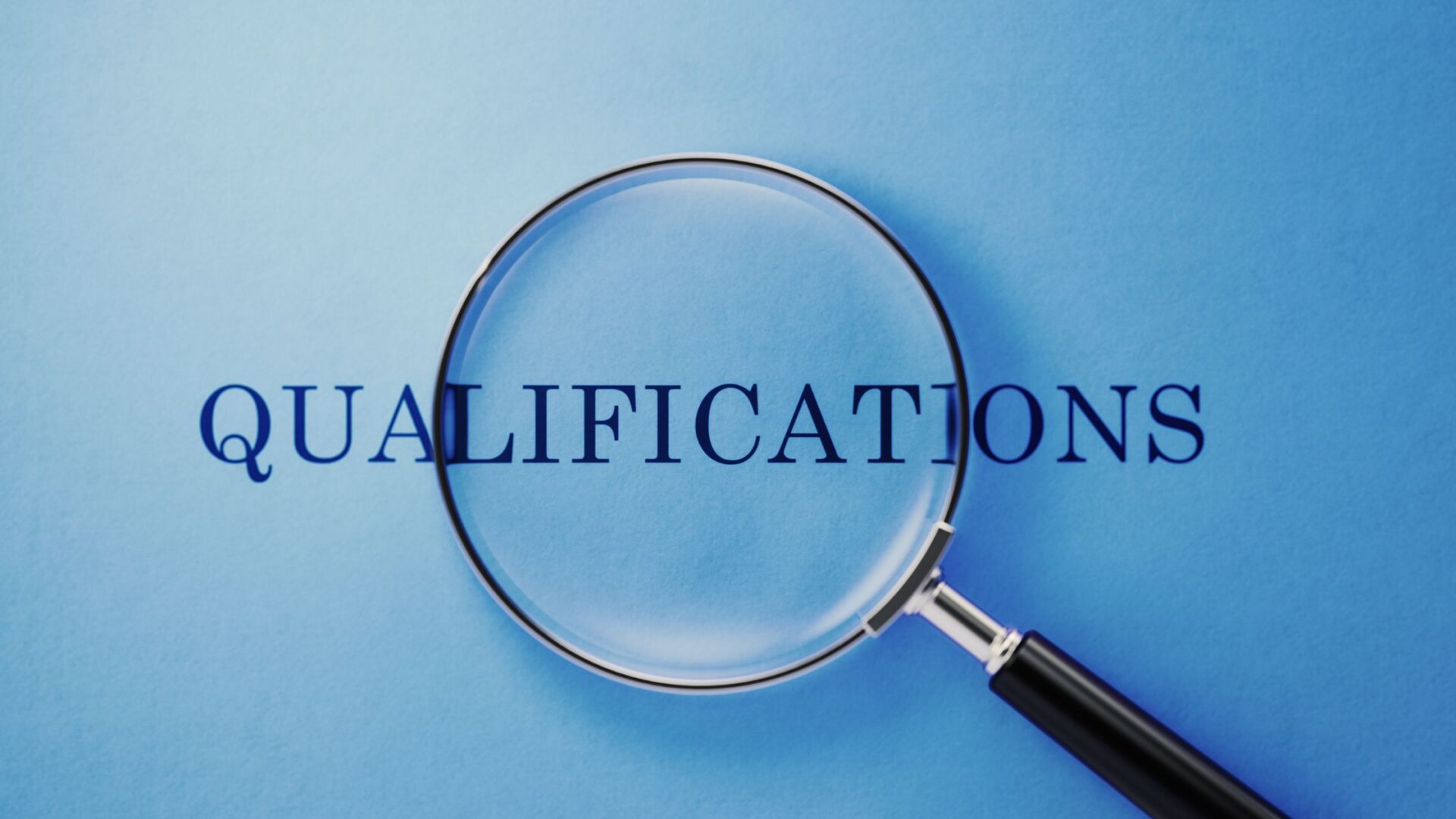If you want a supply chain that runs smoothly, delivers consistent quality, and keeps your reputation intact, supplier qualification has to be your foundation.
It’s not just paperwork, it’s how we confirm a manufacturer or vendor can actually meet the strict quality, regulatory, and operational standards you need before you ever agree to source from them.
Skipping it can cost you more than money. Compliance issues, sudden production delays, or even product recalls can hit your business hard, erode trust, and trigger legal penalties.
In industries like life sciences, aerospace, and food, you don’t get to choose. Regulatory bodies, from the FDA to EU-GMP authorities, demand proof that every supplier you work with follows Good Manufacturing Practices (GMP) and has their capabilities verified. If you don’t, failed audits, fines, or product withdrawals can quickly follow.
Done right, though, qualification pays off. Automotive manufacturers using digital supplier management systems have cut qualification cycle-times by 60% and reduced quality incidents by 25%. That’s because supplier qualification doesn’t stand alone, it ties directly to supplier evaluation, supplier audits, and factory audits, all working together to make sure every product you source meets your standards.
And when you bring in third-party inspectors, you add an unbiased layer of assurance, making sure every claim and process stands up to scrutiny.
In this article, we’ll focus on how you can build a structured, risk-based, and digital-friendly supplier qualification program that keeps your supply chain strong and compliant.
What Is Supplier Qualification?
Supplier qualification is a systematic, risk-based verification and approval activity performed before a supplier is onboarded and any purchase orders are issued. It is designed to confirm that potential suppliers can meet defined quality requirements, regulatory compliance standards, and continuity of supply expectations.
The supplier qualification process involves due diligence steps such as reviewing a supplier’s quality system, assessing financial stability, verifying quality certifications, and ensuring adherence to industry standards, including GMP, ISO 13485, and ICH Q10.
Qualification differs from supplier evaluation and vendor approval.
Qualification acts as a gatekeeping process, performed once before contracting, while evaluation involves ongoing performance monitoring, such as tracking delivery timelines, audit findings, and adherence to quality control measures.
Most companies separate suppliers into two primary classes during qualification: quality-critical suppliers, which produce components such as active pharmaceutical ingredients or aerospace-grade materials, and standard suppliers, which deliver less critical products or services. The depth of oversight scales according to this classification.
In life science industries and other GxP-regulated fields, proof of compliance—including documented quality agreements, change control systems, and regulatory audit evidence—must be secured before the first purchase.
Why Supplier Qualification Matters (Benefits & Business Impact)
Supplier qualification is not only about meeting compliance requirements,it directly influences the stability, efficiency, and profitability of your supply chain.
When you properly qualify suppliers using a structured supplier qualification process, you reduce risks such as product recalls, delivery failures, or regulatory penalties.
You also create a foundation for consistent product quality, better supplier relationships, and measurable financial savings over time.
Data shows the difference between qualified and unqualified suppliers is significant.
Life science companies report zero major compliance observations during FDA inspections when over 95% of their procurement spend is allocated to qualified suppliers. Qualified partners routinely achieve on-time-in-full (OTIF) delivery rates of at least 95%, compared to just 82% for unqualified ones.
In pharmaceutical studies, the probability of recalls drops by more than 40% when suppliers follow robust qualification programs with risk assessment, qualification questionnaires, and performance monitoring systems.
Over three years, companies that integrate qualification with continuous monitoring see defect-related costs decline by around 30%.
- Reduce risks by identifying compliance issues early through documented audits and due diligence, minimizing the likelihood of penalties and recalls.
- Improve supplier performance with structured performance monitoring, ensuring delivery timelines, defect thresholds, and quality standards are consistently met.
- Safeguard brand reputation by working only with suppliers that meet quality certifications, regulatory compliance frameworks, and change control system protocols.
- Enhance financial stability across your supply chain by screening candidates for solvency and sustainable production capacity before approval.
- Strengthen supplier relationships through documented quality agreements and clear expectations, fostering smoother workflows and better collaboration.
- Increase operational efficiency by integrating digital tools like EQMS to track supplier data, audit findings, and quality management processes in real time.
- Support business continuity by securing reliable vendors for active pharmaceutical ingredients, critical components, and life science services.
- Drive continuous improvement by linking qualification dashboards to supplier performance metrics, prompting corrective actions where needed.
- Simplify regulatory compliance by aligning with ISO standards, GMP, and industry regulations, ensuring your suppliers meet every documented requirement.
- Boost customer satisfaction and patient safety by preventing production disruptions and maintaining consistent quality across all products and services.
Supplier Qualification Criteria & Scoring Models
To ensure your supplier qualification process produces consistent results, you need objective criteria supported by quantifiable scoring models. Most companies begin with a mix of technical capability, financial stability, compliance, sustainability practices, and innovation capacity.
These criteria allow you to assess whether candidates can meet quality requirements, maintain delivery timelines, and adapt to changing market conditions.
Qualification starts by applying minimum gate criteria, such as holding valid ISO 9001 certification or meeting corporate ESG baselines.
Suppliers that meet these thresholds are then evaluated against differentiators, including their ability to innovate, their digital maturity, and their proven track record in handling regulated materials like active pharmaceutical ingredients.
To make results measurable, many teams use weighted point systems, Analytic Hierarchy Process (AHP), or Data Envelopment Analysis (DEA).
These methods assign relative importance to factors, commonly Quality 35%, Delivery 25%, Cost 20%, Risk/Compliance 15%, and Sustainability 5%, and translate them into composite ratings.
Digital scorecards enhance this system by automatically pulling live KPIs, including defect rates (≤0.5%) and OTIF (≥95%). They flag real-time variances for immediate risk management, giving you the tools to quickly spot and address issues.
DEA benchmarking can also identify where commodity suppliers sit on the efficiency frontier, helping you decide which vendors offer the best value while meeting quality and regulatory standards.
What is the Supplier Qualification Process: Step-by-Step Framework
A supplier qualification process is a structured sequence of steps designed to ensure that suppliers meet defined quality, regulatory, and operational requirements before they become part of your supply chain.
While the sequence can be tailored to risk levels and industry expectations, the framework typically follows a repeatable model. This model begins with translating your company’s business needs into measurable supplier requirements and ends with adding approved vendors to a controlled Approved Supplier List (ASL), as required by FDA 21 CFR 820 and EU-GMP.
The process generally moves through twelve steps:
- Identify business needs and define success criteria.
- Market screening and supplier pre-classification.
- Preliminary data collection and self-assessment.
- Request for Information or Proposal (RFI/RFP).
- Comprehensive risk assessment.
- On-site or remote audits, often including factory audits.
- Quality-system and compliance evaluation.
- Approval and qualification decision.
- Contract, Quality Agreement, and SLA negotiation.
- Onboarding and knowledge transfer.
- Performance monitoring and continuous oversight.
- Periodic re-qualification or discontinuation.
Identify Business Needs & Define Success Criteria
The first step in the supplier qualification process is translating your company’s strategic goals, product specifications, and quality requirements into measurable supplier expectations.
This step lays the foundation for all due diligence, risk assessment, and supplier audits that follow. You and your team must collaborate across functions—Procurement, Quality, R&D, ESG, and Finance—to ensure every operational and compliance requirement is captured.
For example, a life science company sourcing active pharmaceutical ingredients might demand ISO 14001 certification, a lead time of no more than 15 days, a defect rate below 0.2%, and capacity to scale production twofold within a year.
Success at this stage depends on measurable and realistic standards. Using AI-driven analysis of historical non-conformities and CAPA data can refine requirements, ensuring you avoid repetitive compliance issues or production delays.
Here are 10 practical tips to strengthen this step and guide your supplier selection:
- Link every requirement to a measurable KPI so expectations remain objective and auditable.
- Involve finance early to assess financial stability and credit risk for all candidates.
- Pre-screen against restricted-party and sanctions lists to avoid legal exposure.
- Align sustainability targets with your corporate ESG scorecard for consistent reporting.
- Include product-specific quality standards such as GMP or ISO certifications when drafting your qualification questionnaire.
- Review supplier track records using performance monitoring systems or market research tools.
- Document expectations for change control systems to ensure production processes remain stable.
- Establish thresholds for delivery timelines to maintain supply chain reliability.
- Set minimum customer service standards that align with your brand’s reputation.
- Use cross-functional workshops to weight and prioritize criteria before finalizing the qualification process.
Market Screening & Supplier Pre-Classification
Market screening and supplier pre-classification form the second step of the supplier qualification process. This stage helps you narrow a long list of potential suppliers into a targeted group based on risk, capability, and regulatory readiness.
It starts with structured desk research and market analysis, where you review industry databases, trade registries, and company disclosures. Using digital supplier management platforms, you can filter vendors by location, certifications, production capacity, and product specifications, reducing manual search time by roughly 60%.
Once the initial list is compiled, suppliers are grouped into tiers based on their criticality to your supply chain. High-risk suppliers, such as those providing active pharmaceutical ingredients or aerospace-grade components, are tagged as Class A.
Medium-risk vendors, including secondary packaging or non-critical assemblies, are labeled Class B. Low-risk service providers or MRO suppliers typically fall into Class C.
To make decisions data-driven, pre-classification also incorporates financial stability indicators like Altman-Z scores, as well as ethical-trade and ESG ratings.
Preliminary Data Collection & Self-Assessment
Preliminary data collection and self-assessment help you quickly evaluate whether suppliers can meet your quality, regulatory, and operational requirements before committing to more resource-intensive audits.
This stage typically begins with requesting a qualification questionnaire and essential documents that confirm compliance with industry standards and regulations.
Core dossiers include valid cGMP or ISO certifications, business licenses, audited financial statements for the past two years, and certificates of analysis for representative products or materials.
For regulated sectors like life sciences and pharmaceuticals, product-specific evidence must also be provided. Examples include FDA 510(k) or Notice of Compliance letters, CE-MDR Declarations of Conformity, and any change control system records that demonstrate documented oversight of production processes.
To streamline the process, many companies issue a 40-question digital self-assessment questionnaire (SAQ). This form covers key topics like quality management systems, risk management, cybersecurity safeguards, sustainability practices, and regulatory compliance frameworks. The SAQ can auto-score results, prioritize suppliers for audits, and integrate into EQMS platforms for performance monitoring.
Request for Information / Proposal (RFI / RFP)
The Request for Information (RFI) and Request for Proposal (RFP) stage formalizes your interaction with potential suppliers by collecting detailed data on their capabilities, quality systems, and readiness to meet your quality requirements.
The RFI serves as a market research tool, gathering general intelligence on vendors’ technical competencies, certifications, and production capacity. In contrast, the RFP is a binding proposal that includes contractual details, pricing, and compliance commitments, while the RFQ focuses strictly on itemized cost breakdowns.
An effective RFI/RFP package includes sections for technical qualifications, quality management processes, ESG policies, cybersecurity safeguards, and disclosure requirements.
You should require suppliers to provide lead-time variance history, records of CAPA close-out cycles, and carbon footprint per unit (expressed as kilograms of CO₂).
These disclosures help your team assess supply chain reliability and environmental impact alongside financial stability.
To score responses consistently, a 100-point rubric is recommended: Quality (35 points), Technical fit (25 points), Cost (15 points), ESG (10 points), Delivery performance (10 points), and Digital readiness (5 points).
Risk Assessment (Regulatory, Quality, Financial, Geo-Political)
Risk assessment determines how much oversight each supplier requires by analyzing regulatory, quality, financial, and geopolitical risk factors. This step builds on prior qualification questionnaire results and performance data, using a weighted scoring matrix to evaluate both severity and likelihood of potential issues.
Inputs typically include past audit findings, non-conformance trends, strike or political instability indices, and currency volatility data for international suppliers.
A practical approach uses a traffic-light heat map to guide oversight frequency. Suppliers with risk scores of 15 or higher are categorized as high-risk, requiring on-site audits every 12 months.
Medium-risk suppliers fall into the 8–14 range, triggering audits every 24 months, while low-risk vendors undergo annual desk reviews only.
High-risk indicators often include more than three critical non-conformities in the last audit cycle, on-time-in-full (OTIF) delivery rates below 85%, or a debt-to-equity ratio exceeding 1.5.
By standardizing this process, your team can align risk management strategies with regulatory compliance frameworks like FDA guidelines, GMP standards, and ISO-based quality management systems.
On-Site or Remote Audit
On-site or remote audits are the sixth step in the supplier qualification process and are critical for verifying that a supplier’s documented quality system and production processes match their actual operations.
This step ensures that compliance requirements, quality standards, and regulatory obligations are not just theoretical but practiced throughout the organization. For high-risk manufacturers, particularly those producing active pharmaceutical ingredients or critical aerospace components, on-site audits—often referred to as factory audits—are mandatory.
These audits may be repeated after qualification as part of ongoing performance monitoring and supplier audits.
An in-person audit follows a structured agenda. It begins with an opening meeting, continues with a full production walk-through, documentation review, employee interviews, and ends with a closing session summarizing findings. Evidence sampling checks calibration of production equipment, hygiene protocols, material traceability, and change control system adherence.
Remote audits, which are more common for low- or medium-risk vendors, use live-streamed facility tours and digital document rooms to confirm compliance. These virtual approaches save around 40% in travel costs while maintaining visibility.
All non-conformities are logged with severity codes, and Corrective and Preventive Action (CAPA) deadlines are established, for example, 30 days for critical findings.
Quality-System & Compliance Evaluation
Quality-system and compliance evaluation is the seventh stage of the supplier qualification process, confirming that a supplier’s management systems meet international and industry-specific standards.
During this step, you and your team assess alignment with ISO 9001 for general quality management, GMP and GDP for life science industries, and ISO 13485 for medical device manufacturing.
This evaluation ensures that the supplier’s quality management processes are robust enough to deliver consistent product quality and protect patient safety and customer satisfaction.
Auditors review document-control procedures, including a complete change control log, training matrix, and batch record accuracy. A benchmark target is maintaining batch record completeness at or above 98%.
Traceability is also verified, with an expectation that raw materials can be traced to finished products within two steps inside the quality management system (QMS).
The risk management file must be cross-checked for conformity with ISO 14971 when assessing medical device suppliers and ICH Q9 for pharmaceutical manufacturers.
Approval & Qualification Decision
Approval and qualification decision is the stage where your team finalizes whether a supplier becomes part of your approved supply chain. At this point, all due diligence, risk assessment, and supplier audits have been completed, and each candidate is evaluated using a structured scorecard.
To be fully approved, a supplier must achieve a minimum of 80 out of 100 overall and score above 70% in each critical dimension, including quality requirements, regulatory compliance, delivery performance, and financial stability.
Decisions are typically reviewed by a cross-functional approval board that includes representatives from Procurement, Quality, Regulatory, and Operations.
Suppliers meeting all thresholds are added to a regulated, version-controlled Approved Supplier List (ASL), where they are issued a vendor code for purchasing and integration into your ERP or EQMS systems.
Suppliers that do not fully meet the standards but show potential may receive conditional approval. These suppliers are given a 90-day improvement plan, monitored through performance tracking, and subject to a follow-up audit to verify progress.
Contract, Quality Agreement & SLA Negotiation
Contract, Quality Agreement, and Service Level Agreement (SLA) negotiation solidifies the supplier relationship after qualification.
This step formalizes expectations, defines how compliance requirements will be enforced, and links supplier performance to measurable business objectives.
Contracts should include clauses covering change control, right-to-audit, confidentiality, delivery timelines, and performance-based metrics tied to risk assessment findings. For example, you might negotiate a 1% rebate if on-time-in-full (OTIF) delivery rates remain at or above 98%.
Quality Agreements outline supplier responsibilities for maintaining GMP compliance, quality management processes, and traceability of materials through the production process.
These agreements also ensure suppliers notify you of any material or process changes at least 30 days in advance, in line with FDA 21 CFR 211.100 requirements.
SLAs add operational detail, covering customer service standards, defect thresholds, and reporting frequencies for performance monitoring systems.
Force majeure and business continuity clauses should also be incorporated, aligned with ISO 22301 standards, to ensure suppliers can maintain production during unforeseen disruptions.
Onboarding & Knowledge Transfer
Onboarding and knowledge transfer mark the stage where a newly qualified supplier is integrated into your company’s operational and quality management systems.
This process ensures that the supplier can deliver on all quality requirements and regulatory commitments while aligning with your organization’s workflows and customer service standards.
To start, your team provides training through e-learning modules that cover product specifications, environmental health and safety (EHS) procedures, and cybersecurity best practices. Each module must be completed by 100% of the supplier’s designated staff within 14 days to confirm readiness.
Once training is underway, master data is uploaded into your ERP system to activate EDI or supplier portal ordering, enabling smooth transaction processing.
Baseline performance metrics are also set at this stage, including initial on-time-in-full (OTIF) delivery rates, defects per million (ppm), and average Corrective and Preventive Action (CAPA) lead-times. These metrics give you an immediate reference point for performance monitoring and compliance tracking.
Performance Monitoring & Continuous Oversight
Performance monitoring and continuous oversight help you maintain confidence that suppliers continue meeting your quality, regulatory, and operational standards over time.
This stage uses a combination of scorecards, quarterly business reviews (QBRs), and automated dashboards to track key indicators like on-time delivery (OTD), non-conformities (NCs), CAPA cycle times, and Supplier Corrective Action Request (SCAR) rates.
Real-time dashboards pull data from your quality management system (QMS), warehouse management system (WMS), and transport logs to ensure a consolidated view of supplier performance.
Automated alerts are critical. For example, if OTIF delivery drops more than 3% or defect levels exceed 500 ppm, your supplier management team is immediately notified, triggering a review or on-site visit.
QBRs give both parties a structured forum to analyze trends like the cost of poor quality (COPQ) and agree on improvement projects aimed at reducing risks or inefficiencies.
Periodic Re-Qualification or Discontinuation
Periodic re-qualification or discontinuation ensures that your supplier network remains resilient, compliant, and aligned with your company’s evolving standards.
FDA and EU-GMP guidelines recommend full supplier re-qualification every three years or sooner if there are significant changes, such as new production processes, facility relocations, or major compliance issues.
Triggers for re-qualification include data-driven indicators like more than five CAPAs logged within a 12-month period or a two-tier downgrade in financial stability ratings.
When such events occur, your quality and procurement teams reassess the supplier using the qualification questionnaire and risk assessment tools. If the supplier meets updated requirements, they remain on the Approved Supplier List (ASL).
If discontinuation is required, Planning and Sourcing departments are notified, purchase orders are blocked, and the ASL is updated to reflect the change.
Which Products, Materials & Services Require Supplier Qualification?
For life science industries, active pharmaceutical ingredients (APIs) must comply with ICH Q7, while excipients require certification through EXCiPACT or IPEC-GMP frameworks.
Packaging components, particularly those needing serialization under the Falsified Medicines Directive (FMD) and Drug Supply Chain Security Act (DSCSA), also demand documented supplier approval. Laboratory reagents and calibration services must meet ISO 17025 requirements to ensure traceability and data reliability.
Service providers are equally critical. Contract Research Organizations (CROs) must follow ICH E6 Good Clinical Practice standards, and Contract Manufacturing Organizations (CMOs) must uphold GMP compliance.
Cold-chain logistics vendors must demonstrate validation under GDP Chapter 9.2 to protect product quality during storage and transit.
Outside life sciences, aerospace companies require Nadcap-accredited coating and heat-treatment vendors to meet industry standards, while automotive manufacturers rely on IATF 16949-compliant Tier-2 component suppliers.
What are Regulatory & Standard Requirements for Supplier Qualification?
Regulatory bodies and international standards mandate documented programs to protect product quality, patient safety, and supply chain reliability.
Companies must maintain an updated Approved Supplier List (ASL) under FDA 21 CFR 820.50 and EU-GMP Chapter 7. These rules require you to track supplier performance, implement due diligence steps, and verify compliance with quality standards before sourcing any materials or services.
Risk-based supplier management is embedded in ICH Q9 and ISO 13485 §7.4, both of which demand ongoing risk assessment and documented controls proportionate to each supplier’s impact.
To stay compliant, your qualification process must capture documentation, audit findings, and performance monitoring for every approved vendor.
Key frameworks include:
- FDA 21 CFR 820.50 and EU-GMP Chapter 7: Require documented supplier qualification and ASL maintenance.
- ICH Q9 and ISO 13485 §7.4: Mandate risk-based oversight and continuous performance tracking.
- ISO 9001 Clauses 8.4 & 9.1: Focus on ongoing supplier evaluation and quality control measures.
GMP / GDP Directives
The European Medicines Agency (EMA) and national regulators enforce EU-GMP Chapters 5, 7, and 8, alongside GDP Chapters 5.2 and 9.2. These standards require documented supplier qualification for all suppliers based on their role in the supply chain, including those providing active pharmaceutical ingredients, excipients, and critical logistics services.
Compliance means validating cold-chain distribution, auditing facilities, and maintaining records of supplier performance and corrective actions.
Audit evidence expected includes supplier audit reports, signed quality agreements, CAPA close-out logs, and temperature-mapping studies for storage and transport.
Following these GMP and GDP directives ensures your supplier qualification process meets regulatory compliance standards while reducing the risk of product recalls or patient safety issues.
FDA 21 CFR Parts 210, 211 & 820
The US Food and Drug Administration (FDA) enforces supplier qualification for pharmaceuticals and medical devices through 21 CFR Parts 210, 211, and 820. These regulations require you to maintain formal procedures for evaluating suppliers and verifying material quality before use in manufacturing.
FDA inspectors review your supplier qualification process under §820.50, focusing on documented evaluation steps, approval criteria, and any qualification questionnaire used to verify compliance.
They also examine incoming material test records per §211.84 to ensure raw materials meet quality standards before release. Change-control notifications under §211.100 must be documented to track process adjustments or supplier modifications. Typical audit evidence includes supplier audits, testing certificates, risk assessment records, and change-control logs.
ISO 13485 (Medical Devices)
ISO 13485 is enforced by notified bodies accredited by regulatory authorities, and it governs quality management systems for medical device manufacturers. Clause 7.4 requires documented controls over suppliers based on risk, including formal supplier qualification and vendor qualification processes for critical components and services.
You must maintain signed Quality Agreements detailing roles, responsibilities, and change control system procedures.
Re-evaluation records must show ongoing performance monitoring and supplier audits at defined intervals, especially for life science industries where compliance requirements are strict. Auditors expect evidence such as qualification questionnaires, audit findings, and documented CAPA logs.
ISO 9001 (Quality Management)
ISO 9001 applies across industries and is audited by accredited certification bodies. Clauses 8.4 and 9.1 emphasize the need for ongoing supplier evaluation and performance monitoring as part of a company’s quality management processes.
You are expected to demonstrate how your supplier qualification process tracks supplier performance through documented scorecards, trend charts, and corrective actions.
Evidence must include supplier audits, documented risk management strategies, and records of any compliance failures and their resolution. Performance monitoring systems should flag deviations, such as late deliveries or quality defects, for immediate escalation.
ISO / IEC 17025 (Labs & Calibration)
ISO/IEC 17025, enforced by accreditation bodies approved by national regulators, governs testing and calibration laboratories. It requires you to maintain documented supplier qualification processes for reference materials and calibration houses under Clause 6.6.2.
This clause ensures that all external services meet stringent quality standards and traceability requirements.
Your laboratory must keep an updated, approved-vendor list and verify that suppliers hold valid quality certifications. Evidence auditors look for includes completed qualification questionnaires, supplier audit reports, and traceability certificates proving calibration chains link back to national or international standards.
ICH Q10 & Related Pharmacopeias (USP <1083>, Ph. Eur.)
ICH Q10, overseen by global health authorities, outlines the pharmaceutical quality system requirements that you must embed in your supplier qualification process. USP <1083> Section 4 specifically mandates risk-based supplier assessment, requiring you to document risk rankings, audit frequency matrices, and performance metrics for critical suppliers.
Auditors will expect to see documented risk assessments, qualification questionnaires, supplier performance dashboards, and evidence of supplier audits based on the risk level. European Pharmacopoeia standards also demand proof of compliance tracking, quality agreements, and traceability for active pharmaceutical ingredients and excipients.
Sector-Specific or Regional Regulations (e.g., Automotive IATF 16949)
IATF 16949, enforced by automotive certification bodies, extends ISO 9001 with industry-specific controls. It requires you to prove supplier qualification through PPAP (Production Part Approval Process) approvals, documented supplier scorecards, and escalation plans for chronic non-compliance issues such as defect rates at or above 500 ppm.
Auditors will request qualification process evidence, including vendor qualification records, risk management strategies, and corrective action logs. Supplier audits and trend data are critical, especially when working with Tier-2 component manufacturers that must meet strict delivery and product quality expectations.
Risk-Based Supplier Monitoring & Performance Management
Risk-based supplier monitoring ensures that you match oversight intensity with the risk profile of each supplier. Your initial risk assessment defines how often you conduct audits, how you set sampling plans, and how frequently you track key performance indicators.
This structure reduces unnecessary costs while preserving supply chain reliability.
Low-risk suppliers typically undergo desk reviews and an annual KPI check. Medium-risk vendors receive remote audits every 24 months with performance monitoring dashboards.
High-risk manufacturers, especially those producing active pharmaceutical ingredients or critical components, require on-site audits every 6–12 months with full quality and regulatory oversight.
A simple case highlights the savings: when one plastic component supplier moved from high- to medium-risk through process improvements, audit frequency dropped by 50 percent, reducing costs by $80,000 per year.
Digital Tools, Automation & Emerging Technologies
Modern supplier qualification has shifted from manual spreadsheets to integrated, automated platforms. Cloud-based QMS and ERP systems provide real-time visibility into supplier data, audit findings, and change control systems.
These platforms cut manual data entry by 70 percent and improve audit closure speed by 40 percent, boosting your efficiency.
AI-powered analytics enhance your supplier qualification process by delivering predictive risk scoring and instant alerts. If defect rates spike or delivery timelines slip, automated notifications prompt immediate review.
Digital KPI dashboards pull data from EQMS, WMS, and transport logs, allowing you to monitor performance metrics like OTIF and CAPA cycle times continuously.
When selecting supplier qualification software, ensure it meets key standards: API openness for integration, role-based permissions for security, e-signature compliance under 21 CFR Part 11, and multilingual portals for global vendors.
Automotive digitalization shows this approach in practice, Industry 4.0 platforms reduced manual workflows and tightened supplier audits across competitive markets.
What are Common Challenges in Supplier Qualification?
The most common pitfalls in supplier qualifications include compliance gaps, shifting regulatory demands, and overwhelming data streams that make it difficult to pinpoint real risks.
Each of these issues can lead to production delays, product recalls, and added cost if left unchecked.
Six of the most critical challenges include:
- Address hidden GMP gaps and transparency issues by insisting on live virtual walk-throughs and unedited video tours, especially for life science industries. This prevents surprises during supplier audits.
- Manage rapidly changing regulations with a regulatory watch module that tracks updates to FDA, EU-GMP, and ISO standards automatically.
- Control data overload by using AI summarization tools to focus on red flags like CAPA backlog or audit findings, cutting manual review time.
- Screen for added risks through digital checklist fields that cover sanctions, cyber-security maturity, and ESG scoring.
- Upgrade audit efficiency with mobile audit software, using photo evidence and voice-to-text notes for real-time reporting.
- Drive supplier improvement plans by co-creating data-driven roadmaps. Suppliers with these joint plans show defect reductions averaging 18 percent year-over-year.
Practical Case Study: Implementing a Risk-Based, Digitally-Enabled Program
A mid-sized pharmaceutical manufacturer struggled with frequent supplier deviations and delivery delays, often due to poor quality management processes. After adopting a risk-based, digitally enabled supplier qualification program, they addressed these recurring failures.
The company began with due diligence and a qualification questionnaire for each high-risk vendor, followed by implementing an EQMS that automated performance monitoring and flagged non-compliance. Within a year, supplier deviations dropped by 40 percent, OTIF improved to 96 percent, and audit closure times shortened by 45 percent.
Conclusion
A solid, risk-based, and digitally backed supplier qualification program isn’t just about ticking compliance boxes, it’s how we keep products reliable, supply chains steady, and customers happy.
When you use due diligence, set clear quality standards at every step, and rely on digital tools to track supplier performance, you’re not just meeting regulations, you’re protecting your brand and avoiding disruptions that could cost you time and trust.
But this process can’t stand still. You and your team need to revisit your qualification questionnaire, update your criteria to match new FDA and ISO standards, and adjust for evolving risks in your industry.
By doing this, we can build stronger supplier partnerships, stay ahead of compliance changes, and keep a real competitive edge in fast-moving, highly regulated markets.
Frequently Asked Questions
1. How Often Should A Supplier Be Requalified?
You should requalify each supplier every one to three years, depending on their risk rating and any significant operational changes. High-risk suppliers, such as those handling active pharmaceutical ingredients or critical components, should undergo full requalification annually, while low-risk vendors may follow a thirty-six-month cycle.
Trigger events also warrant immediate review. If a supplier relocates a facility, merges with another company, receives a critical non-conformance during an audit, or reports repeated production delays, a new assessment must be initiated.
2. What’s the Difference Between Supplier Qualification and Supplier Evaluation?
Supplier qualification is a formal, structured process performed before a supplier is added to your supply chain, while supplier evaluation is the ongoing performance monitoring you conduct after approval. Qualification acts as a gate, confirming a candidate meets all compliance requirements, quality standards, and risk assessment criteria before onboarding. Evaluation, by contrast, focuses on continuous oversight.
3. What’s the Difference Between Supplier Qualification And Supplier Audit?
Supplier qualification is the overall approval stage, while a supplier audit is one tool used within both qualification and ongoing supplier management. Qualification ensures a manufacturer or vendor meets quality and regulatory expectations, using processes like document reviews, risk assessment, and vendor qualification scoring to confirm readiness for your products or services.
An audit, on the other hand, is a focused assessment. It evaluates compliance with GMP, ISO standards, and change control systems by inspecting production processes, reviewing documentation, and identifying non-compliance risks.
4. Can Small Businesses Skip the Supplier Qualification Process?
No. Even as a small business, you should not skip the supplier qualification process, though you can scale the depth of review based on risk and complexity. Skipping due diligence often leads to compliance issues, unexpected product quality failures, or disruptions in your supply chain. By using a qualification questionnaire and simplified checklists, you can verify that candidates meet basic quality standards, financial stability thresholds, and regulatory compliance requirements before they supply products or services.
5. How Long Does Supplier Qualification Take?
Supplier qualification typically takes anywhere from two weeks to several months, depending on the supplier’s risk profile, document readiness, and your quality requirements. Low-risk suppliers with complete records and prior certifications can move through the qualification process quickly. High-risk manufacturers often require supplier audits, performance monitoring setups, and thorough documentation reviews. Using digital platforms such as cloud-based EQMS or integrated ERP systems can cut lead time by up to 60%.










